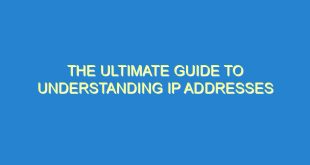Introduction
Every home or office has them, but how much do you really know about sockets? These small but essential items are the backbone of our electrical systems, powering everything from our phones and laptops to our kitchen appliances and lighting. In this article, we’ll explore the ins and outs of a socket, including its components, types, and uses. So, let’s get started!
What is a Socket?
A socket, also known as an electrical outlet or receptacle, is a component that allows electrical devices to connect to a power source. It consists of two or more metal contacts that are connected to wires and housed in a plastic or metal casing. When an electrical device is plugged into the socket, it completes a circuit and allows electricity to flow from the power source to the device.
Components of a Socket
A socket consists of several components that work together to provide power to electrical devices:
- Contacts: These are the metal prongs that make contact with the device’s plug and allow electricity to flow.
- Wires: These are the conductive cables that connect the contacts to the power source.
- Casing: This is the plastic or metal housing that protects the contacts and wires from damage and provides a safe and convenient way to access the power source.
- Grounding: This is a safety feature that ensures any excess electricity is safely redirected to the ground rather than through the device or the user’s body.
Types of Sockets
There are several types of sockets, each with its own unique features and uses:
- Standard Socket: This is the most common type of socket found in homes and offices. It has two contacts and is designed to fit plugs with two prongs.
- GFCI Socket: This type of socket includes a ground fault circuit interrupter (GFCI) that shuts off the power if it detects a ground fault, such as a short circuit or electrical shock.
- USB Socket: This type of socket includes one or more USB ports that allow devices to be charged or connected to a computer without the need for a separate charger or cable.
- Smart Socket: This type of socket is connected to the internet and can be controlled remotely using a smartphone or other device. It can be used to turn devices on or off, set schedules, and monitor energy usage.
Uses of a Socket
Sockets are used for a wide variety of purposes, including:
- Powering Devices: Sockets are used to power a wide range of devices, including phones, laptops, TVs, kitchen appliances, and lighting.
- Charging Devices: Sockets with USB ports are used to charge devices such as phones, tablets, and e-readers.
- Connecting Devices: Sockets are used to connect devices such as printers, scanners, and cameras to a computer.
- Controlling Devices: Smart sockets are used to control devices remotely, such as turning lights on and off or setting a schedule for a coffee maker.
How to Install a Socket
If you need to install a socket, it’s important to follow the proper procedures to ensure a safe and effective installation. Here’s a step-by-step guide:
- Turn off the power: Before beginning any electrical work, turn off the power to the area where the socket will be installed. This can be done by flipping the circuit breaker or removing the fuse that controls the area.
- Remove the old socket: If you’re replacing an existing socket, remove it from the wall by unscrewing the screws that hold it in place.
- Connect the wires: Connect the wires from the new socket to the wires in the wall. The black wire should be connected to the brass screw, the white wire should be connected to the silver screw, and the green or bare wire should be connected to the green screw.
- Attach the socket: Once the wires are connected, attach the socket to the wall using the screws provided.
- Test the socket: After the installation is complete, turn the power back on and test the socket to ensure it is working properly.
FAQ
What is the difference between a socket and a plug?
A socket is the component that provides power to an electrical device, while a plug is the component that connects the device to the socket. Plugs have two or more prongs that fit into the contacts of the socket, completing the circuit and allowing electricity to flow.
Can I install a socket myself?
While it is possible to install a socket yourself, it is important to have the proper knowledge and tools to do so safely. If you are not comfortable working with electricity, it is best to hire a professional to install the socket for you.
What is a GFCI socket?
A GFCI socket is a type of socket that includes a ground fault circuit interrupter. This device monitors the flow of electricity and shuts off the power if it detects a ground fault, such as a short circuit or electrical shock. This helps to prevent electrical fires and protect users from injury.
What is a smart socket?
A smart socket is a type of socket that is connected to the internet and can be controlled remotely using a smartphone or other device. This allows users to turn devices on or off, set schedules, and monitor energy usage from anywhere in the world.
What should I do if a socket is not working?
If a socket is not working, the first step is to check the circuit breaker or fuse box to ensure that the power is on. If the power is on and the socket is still not working, it may be a problem with the socket itself and should be inspected by a professional electrician.
 SocketZone.com Internet Socket | Websocket Information Blog
SocketZone.com Internet Socket | Websocket Information Blog


